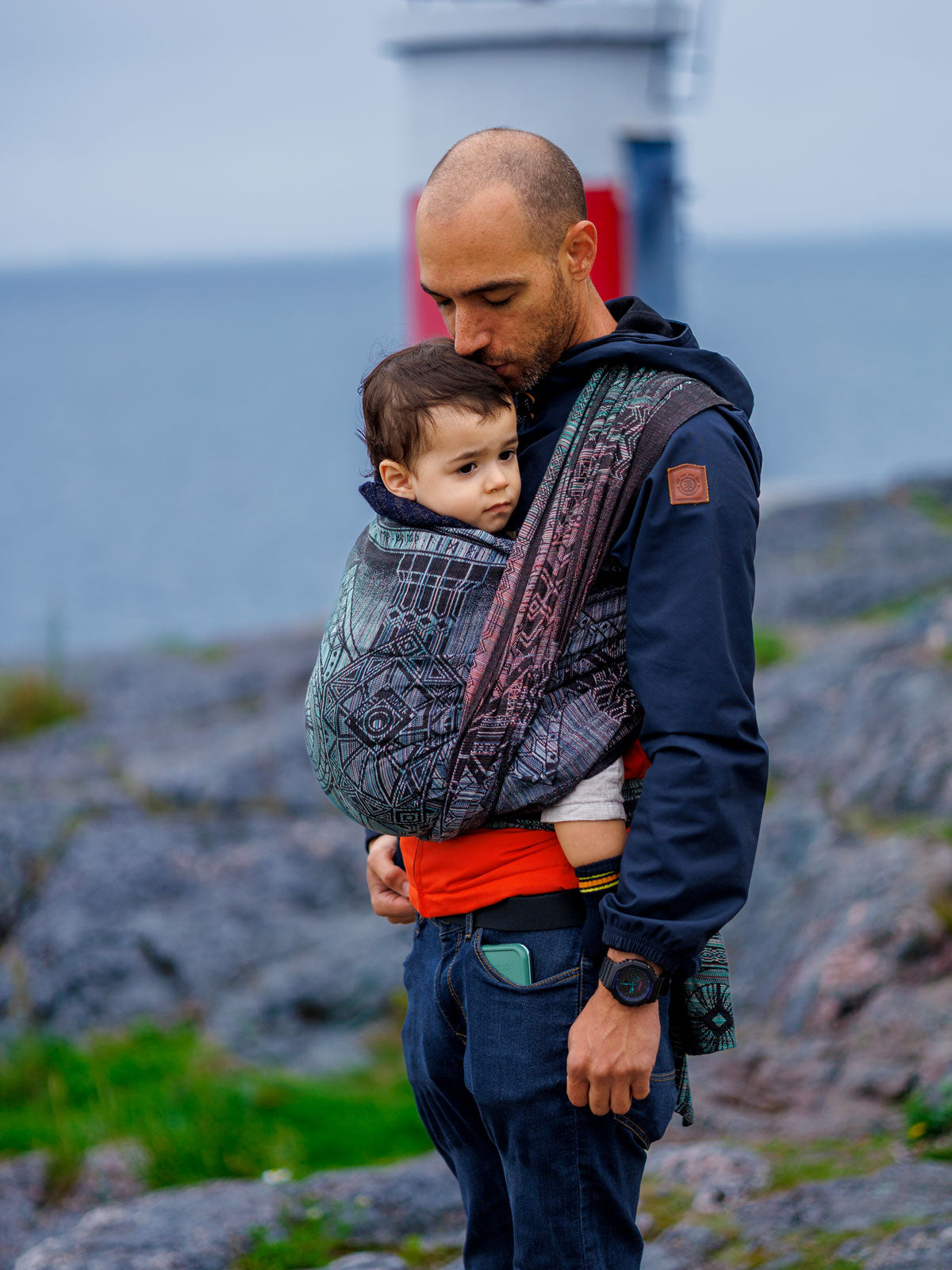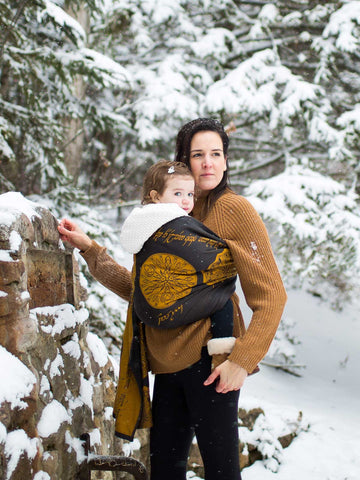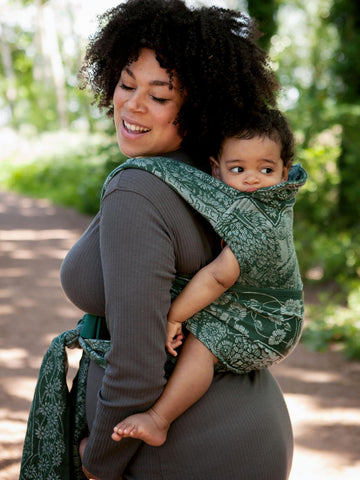
Best Baby Backpack Carriers for Hiking
What Makes the Best Baby Backpack Carriers for Hiking

Comfort is of the utmost importance if you’re out walking while carrying your little one. The best baby carriers for hiking, long walks and days out will provide ergonomic support and a good distribution of your child’s weight. Balance is a crucial consideration when walking on uneven terrain so even weight distribution and a carrier which holds your baby at a height that works in line with your centre of gravity is ideal.
Your carrier should hold your baby in a comfortable and safe position too. A squat with knees above bottom creating an M-shape, is ideal to help support the development of healthy hips.

It’s worth considering what position you want to carry your baby in; front, hip or back. Young babies benefit from being carried on your front, especially during long walks. This provides the necessary support for their head, which can rest against your chest, and allows you to respond quickly to their needs.
You may feel more comfortable carrying older babies and children on your back when out all day. Back carrying helps to distribute their weight evenly and helps you feel comfortable and balanced.

Puffins Arisaig Cairis Carrier
Lastly, warmth and temperature should be taken into account. Depending on the weather, selecting a carrier which is breathable or can help you to share body heat, is useful and how easy the carrier allows you to regulate your baby's temperature, is also a consideration.
What Features Should You Look for in a Baby Carrier for hiking?
There are many different types of baby carriers available. The best baby carrier for hiking is one which fits you and your child correctly, safely and comfortably, and this choice is different for everyone.
Some important points you may want to consider when deciding are -
- the age of your child
- The position you want to carry them in; on your front, hip or back
- If the carrier offers a safe, secure and optimal position
- If it fits you correctly for your body shape
- Do you feel most comfortable and confident using it for long periods of time?
Let’s look at the pros and cons of each of each type -
Framed Carriers

Pros -
- Storage - most models include useful pockets so there’s less need for a separate bag.
- Air flow - child is held slightly away from your body so you are both kept cool.
- Weather protection - often have accessories to protect from sun and rain.
- Designs are based on rucksacks - will feel familiar to use to anyone who’s carried large packs.
Cons -
- Poor fit - most models are designed for men so don’t fit some women well.
- Heavy - the frame is heavy and bulky to carry and transport.
- Affect balance - child sits high up and away from your body which can affect your balance.
- Age limits - Not suitable for young babies.
- Limited positions - can only be used for back carrying.
- More difficult to monitor baby - as children are held away from your body.
- Cold for child in winter - no shared body heat to keep them warm.
Woven wraps

Pros-
- One size fits all - One wrap fits any body shape.
- Fits all ages - from newborn to preschool and older.
- Comfortable and supportive for wearer - Mould to your body shape while evenly distributing your child’s weight.
- Soft & comfortable for child - Provides ideal support for baby in the ergonomic ‘M’ position.
- Versatile - You can use your wrap to do lots of different carries.
- Lots of different positions - Can carry on your front, hip or back.
- Babies feel secure and close - you can respond quickly to their needs.
- Different fabric blends and thicknesses - suits different temperatures and seasons.
Cons -
- Steeper learning curve - takes a little practice to become confident.
- Long tails may drag on the ground.
- You need to carry a separate bag.
Soft Structured Carrier - Full Buckles and Half Buckles

Pros-
- Provides ideal support - baby supported in the ergonomic ‘M’ position.
- Babies feel secure and close - you can respond quickly to their needs.
- Easy to use
- Comfortable - lightweight and works with wearer’s centre of gravity
- Lots of different positions available - Can carry on your front, hip or back.
- Great fit - adjustable and comfortable for a variety of body shapes
Cons -
- Different sizes of carrier usually required for different ages of your child
- You need to carry a separate bag.
Learn more about baby carriers
Ring Sling

Pros-
- Perfect quick ups and downs - great for toddlers and preschoolers who want to walk frequently.
- One size fits all - One wrap fits any body shape.
- Soft & comfortable - Provides ideal support for baby in the ergonomic ‘M’ position.
- Babies feel secure and supported - you can respond quickly to their needs.
- Different fabric blends and thicknesses - suits different temperatures and seasons.
- Quick and easy to use.
Cons -
- Less support - One shoulder carry, suited for short periods when walking.
- You need to carry a separate bag.
Which Baby Carrier Should You Choose for Hiking?
That depends! The best baby carriers for hiking and long days out will vary from person to person. Framed backpacks are often marketed as being the most suitable option for long walks but they’re not right for everyone. These can be bulky, and ill-fitting on certain body types. They aren't suitable for newborns and they can’t be neatly packed away if an older child is walking for stretches. In many cases you may prefer a soft structured carrier, a half buckle or Mei Dai, a woven wrap or a ring sling. If you're comfortable and confident using it every day then it may be the perfect companion for a long day out.

Shire West Farthing Cairis Carrier
Whether you're a seasoned hiker and want to continue your passion with your little ones in tow, or you’re eager to introduce your child to the wonders of the great outdoors, a carrier which you both find comfortable is crucial. The perfect baby carrier for an enjoyable day out or a full day of hiking combines comfort, good weight distribution and child-centric features to make your outdoor adventure safe and enjoyable for both you and your precious cargo.
Read our Getting Started Guide for more information

Best Baby Carrier For Newborns 2025

Grey Havens: Oscha Lord of the Rings Design Development

Can Baby Carriers Cause Back Pain?








 https://oschaslings.com
https://oschaslings.com